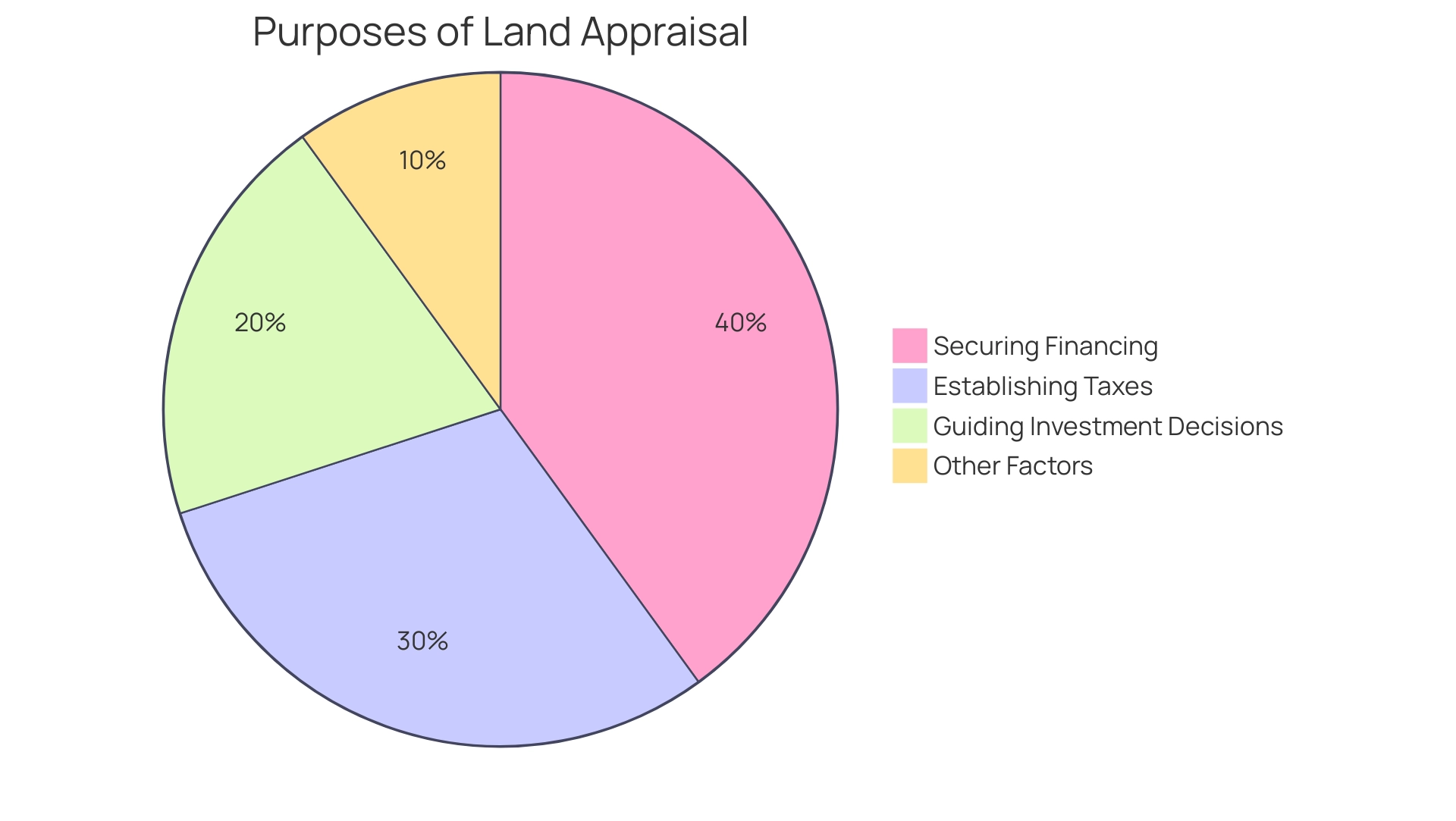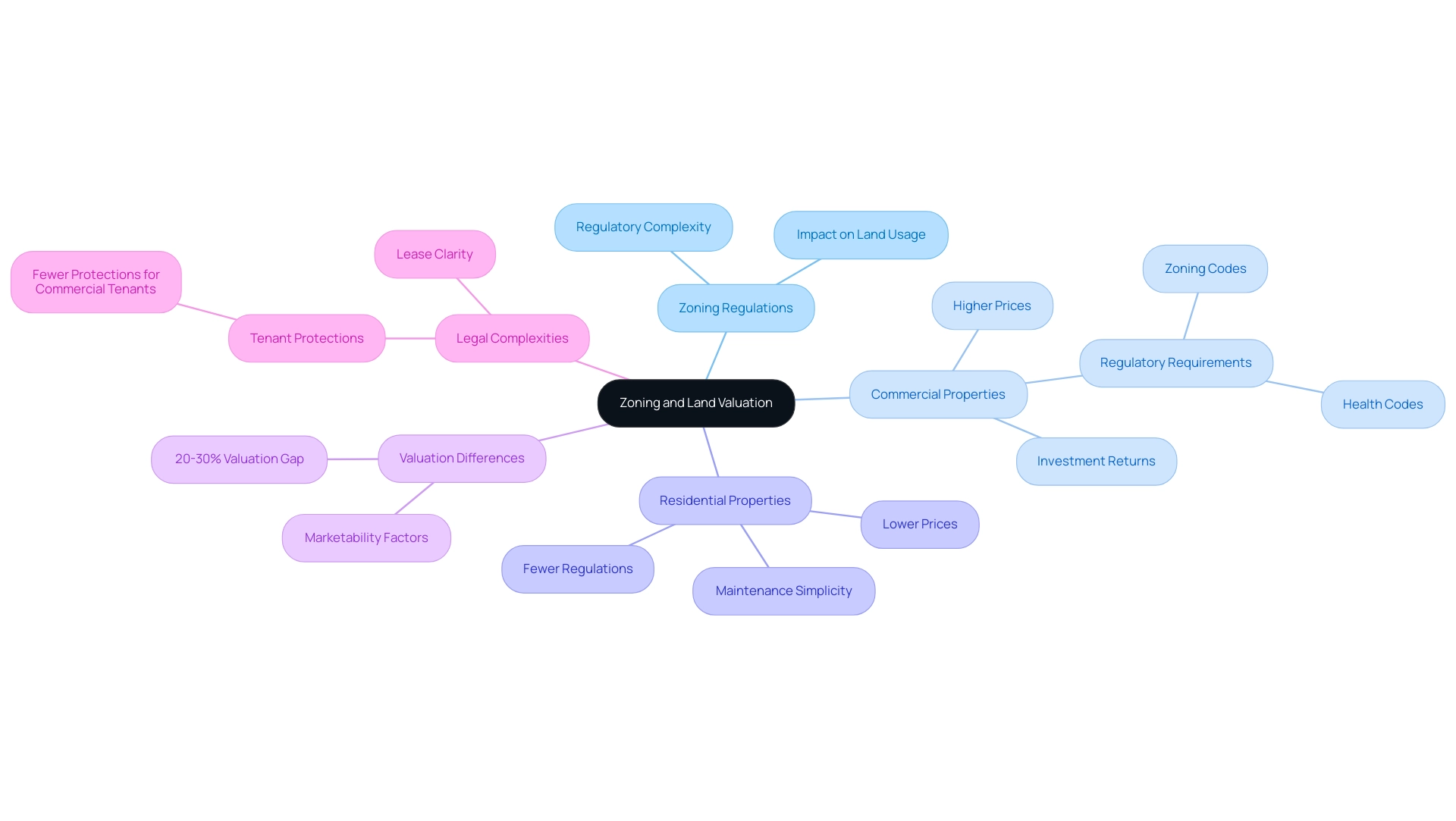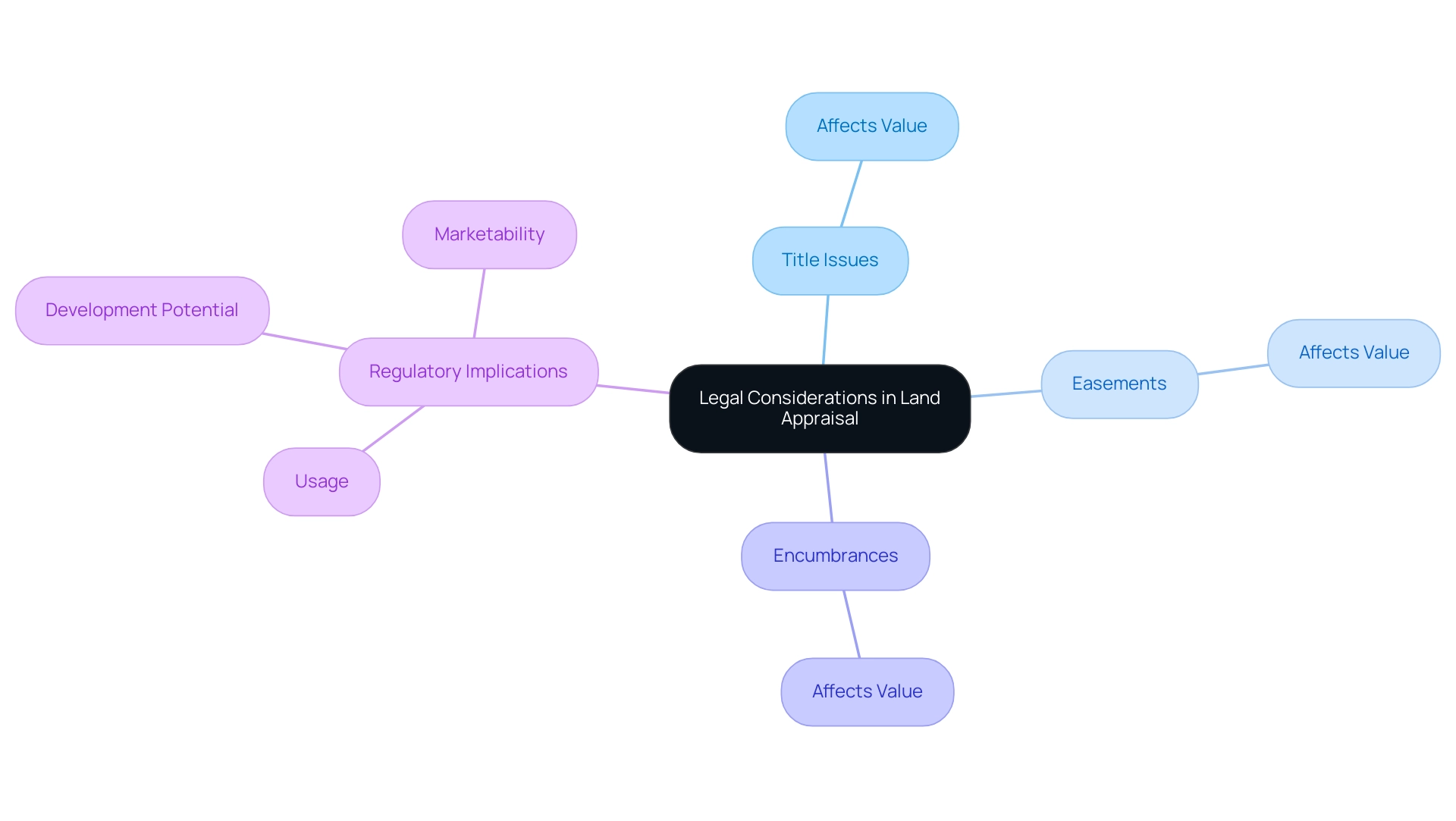Introduction
In the complex landscape of real estate, understanding land appraisal is essential for stakeholders across various sectors. This multifaceted process involves assessing the value of land based on a myriad of factors, including location, size, zoning, and prevailing market conditions. Accurate land valuations are not merely academic exercises; they play a pivotal role in securing financing, determining property taxes, and guiding investment decisions.
As the energy and infrastructure industries continue to evolve, the implications of precise land appraisal become increasingly critical, influencing project feasibility and long-term success. This article delves into the key methods of land valuation, the impact of zoning regulations, and the legal considerations that shape the appraisal process, providing a comprehensive overview for professionals navigating this vital aspect of real estate.
Defining Land Appraisal: An Overview
Property appraisal is the process of determining the value of a parcel, taking into account various factors such as location, size, zoning, and market conditions. This essential practice serves multiple purposes, including:
- Securing financing for purchases
- Establishing taxes on assets
- Guiding investment decisions
Comprehending the appraisal process is crucial for stakeholders in the energy and infrastructure sectors, as accurate valuations directly impact project feasibility and success.

Exploring Key Methods of Land Valuation
Comparative Market Analysis (CMA)
Comparative Market Analysis (CMA) is a pivotal tool in land appraisal, comparing a piece of land with recently sold parcels in the same vicinity. This approach assesses different elements such as size, location, and current industry trends to estimate a fair worth. For example, a CMA can recommend a reasonable price range, such as between $300,000 and $350,000 for similar assets. Research indicates that assets assessed using CMA techniques sell within 95% of their estimated worth, boosting its credibility among real estate experts. However, it's essential to note that a CMA should complement, not replace, the expertise of a professional real estate agent. Julie Bang stated, 'For buyers, a CMA can verify if a home is in the right price range and help pinpoint a competitive offer that will be taken seriously—without going overboard.' In summary, a CMA functions as a fundamental tool for comprehending market dynamics, assisting buyers and sellers in making informed choices.
Income Approach
The income approach is mainly utilized for income-producing assets, determining the worth of the site based on its anticipated earnings over time. This method considers both current expenses and potential growth, ensuring a comprehensive valuation. For example, if a piece of property can generate an annual rental income of $50,000 and is expected to grow at a rate of 3% per year, the projected income can significantly influence its valuation. Recent advancements in this method have enhanced the precision of income forecasts, establishing it as a dependable technique for real estate assessment in 2024.
Cost Approach
The cost approach determines the worth of the site by evaluating the expense to replace or recreate the enhancements on the estate, minus any depreciation. This method is particularly beneficial for new constructions or distinctive real estate, where comparable sales data may be limited. By concentrating on the expenses of construction and present economic conditions, this method offers a practical assessment for assets with unique traits.
Sales Comparison Approach
Like CMA, the sales comparison method assesses value based on the selling prices of similar assets. This method emphasizes the principle of substitution, where a buyer will not pay more for a property than what they would for a similar, available one. This approach is widely used due to its straightforward application and reliance on actual market data, making it a cornerstone of property appraisal practices.

The Role of Zoning in Land Valuation
Zoning regulations play a crucial role in determining land usage and, consequently, its valuation. Properties designated for commercial purposes often command higher prices than their residential counterparts, primarily due to the potential for increased returns on investment. For instance, the residential rental vacancy rate in the first quarter of 2022 stood at 5.8%, indicating a stable demand for residential units. However, commercial real estate is subjected to a wider range of stringent regulations, including zoning and health codes, which can significantly influence their market worth.
Melissa Holtje highlights the complexity faced by commercial tenants, noting that 'commercial tenants have fewer legal protections available to them, and good commercial leases contain crystal clear default clauses.' This perspective underscores the need for a thorough understanding of local zoning laws among appraisers, as these regulations can significantly affect marketability and future development prospects. By understanding these complexities, appraisers can better navigate the challenges faced by commercial tenants.
The disparity in regulatory requirements is further illustrated by the fact that residential structures are generally subject to fewer codes and permits compared to commercial establishments, which face extensive safety and suitability regulations. A case study on the impact of zoning regulations on land worth revealed that investors in commercial real estate must be prepared for more stringent regulatory requirements.
Recent changes in zoning laws, particularly those aimed at promoting mixed-use developments, have had a profound impact on real estate valuation by altering the landscape of urban development. These shifts not only impact commercial real estate prices but also affect residential assessments, making it crucial for appraisers to comprehend these dynamics. Statistics indicate that commercial properties can often see valuation differences of 20-30% compared to residential properties based on zoning designations, highlighting the importance of precise property appraisal.
In summary, the influence of zoning regulations on property prices is multifaceted, involving a mix of legal, economic, and market considerations. Appraisers must stay informed about current zoning laws and their implications to provide accurate and reliable valuations.

Legal Considerations in Land Appraisal
Legal considerations in property appraisal include:
- Title issues
- Easements
- Encumbrances
These factors can significantly affect value. An accurate appraisal must take into account any legal restrictions or claims against the property. Furthermore, comprehending the implications of local, state, and federal regulations is crucial for appraisers, as these laws can affect:
- Usage
- Development potential
- Overall marketability
Consulting with legal experts during the appraisal process can ensure compliance and mitigate risks associated with land transactions.

Conclusion
The intricacies of land appraisal are paramount for stakeholders in the real estate sector, particularly within the energy and infrastructure industries. As outlined, the process involves a thorough evaluation of various factors including location, size, zoning, and market conditions. Recognizing the significance of these elements is essential for securing financing, establishing property taxes, and making informed investment decisions.
Various methodologies, such as Comparative Market Analysis, the Income Approach, and the Cost Approach, provide essential frameworks for accurately determining land value. Each method offers unique insights that cater to different types of properties and market conditions, reinforcing the necessity of employing a comprehensive approach to land valuation. Furthermore, the role of zoning regulations cannot be overstated, as they directly influence property usage and market dynamics.
Understanding these regulations is crucial for appraisers to navigate the complexities of commercial versus residential valuations, which can vary significantly based on zoning designations.
Legal considerations also play a vital role in the appraisal process. Title issues, easements, and local regulations must be accounted for to ensure accurate valuations and compliance with legal standards. Engaging with legal experts can help mitigate risks and enhance the reliability of appraisals.
In conclusion, mastering the art of land appraisal is essential for achieving successful outcomes in real estate transactions. By leveraging the appropriate valuation methods and comprehensively understanding zoning and legal implications, stakeholders can navigate this complex landscape with confidence. As the industry continues to evolve, staying informed and adaptable will be key to making astute investment decisions and ensuring project viability.




